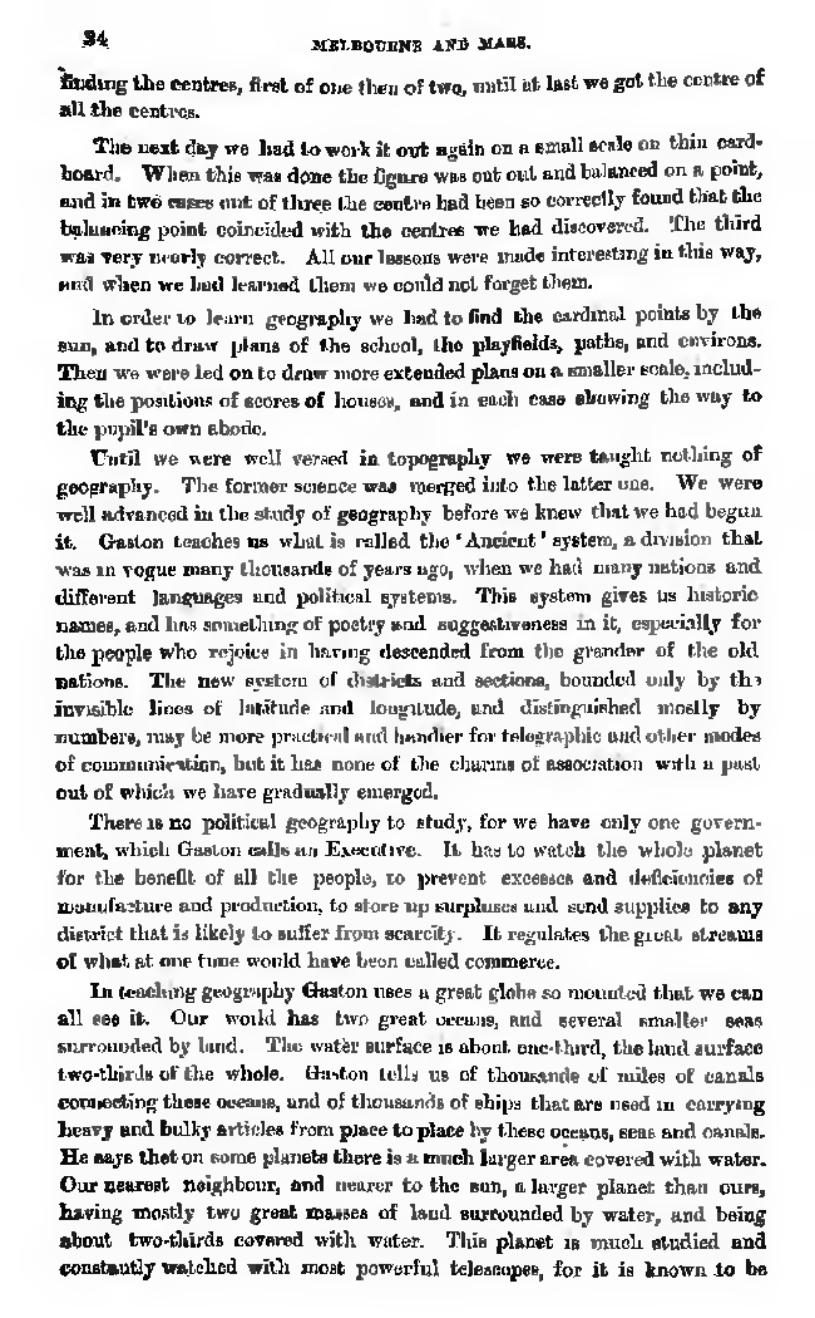finding the centres, first of one then of two, until at last we got the centre of all the centres.
The next day we had to work it out again on a small scale on thin cardboard. When this was done the figure was cut out and balanced on a point, and in two cases out of three the centre had been so correctly found that the balancing point coincided with the centres we had discovered. The third was very nearly correct. All our lessons were made interesting in this way, and when we had learned them we could not forget them.
In order to learn geography we had to find the cardinal points by the sun, and to draw plans of the school, the playfields, paths, and environs. Then we were led on to draw more extended plans on a smaller scale, including the positions of scores of houses, and in each case showing the way to the pupil's own abode.
Until we were well versed in topography we were taught nothing of geography. The former science was merged into the latter one. We were well advanced in the study of geography before we knew that we had begun it. Gaston teaches us what is called the 'Ancient' system, & division that was in vogue many thousands of years ago, when we had many nations and different languages and political systems. This system gives us historic names, and has something of poetry and suggestiveness in it, especially for the people who rejoice in having descended from the grander of the old nations. The new system of districts and sections, bounded only by the invisible lines of latitude and longitude, and distinguished mostly by numbers, may be more practical and handier for telegraphic and other modes of communication, but it has none of the charms of association with a past out of which we have gradually emerged.
There is no political geography to study, for we have only one government, which Gaston calls an Executive. It has to watch the whole planet for the benefit of all the people, to prevent excesses and deficiencies of manufacture and production, to store up surpluses and send supplies to any district that is likely to suffer from scarcity. It regulates the great streams of what at one time would have been called commerce.
In teaching geography Gaston uses a great globe so mounted that we can all see it. Our world has two great oceans, and several smaller seas surrounded by land. The water surface is about one-third, the land surface two-thirds of the whole. Gaston tells us of thousands of miles of canals connecting these oceans, and of thousands of ships that are need in carrying heavy and bulky articles from place to place by these oceans, seas and canals. He says that on some planets there is a much larger area covered with water. Our nearest neighbour, and nearer to the sun, a larger planet than ours, having mostly two great masses of land surrounded by water, and being about two-thirds covered with water. This planet is much studied and constantly watched with most powerful telescopes, for it is known to be
